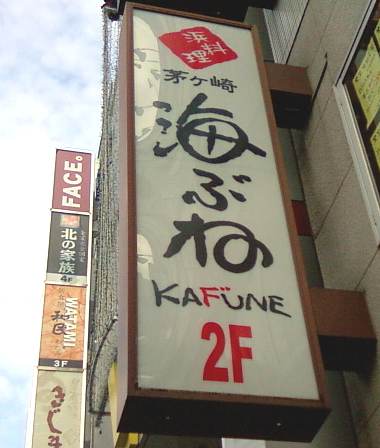Kabune
Latin-alphabet text incorporating a chōonpu (vowel-elongating character) is a fairly common sight in Japan, but I think this is the first time I've ever seen a dakuten (consonant-voicing diacritic) drafted into the legion:

That's Kaf゛une, pronounced kabune. (The Japanese-script version is 海ぶね, implying "sea [i.e. fishing] boat".)
The implied chain of logic here is solid, viz.:
If ふ = /fu/
and ぶ = /bu/
and fu = /fu/
then f゛u = /bu/
Q.E.D.

![[No-sword]](http://no-sword.jp/images/site/no-sword_banner.jpg)



caf:
That's so cool :D
I like how it's red to get peoples attention too.
Also I spy a maru on the end of FACE in another sign, so it's clearly a happenin' street.
Is my intense love of the ten-ten somehow wrong?